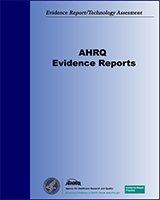NCBI Bookshelf. A service of the National Library of Medicine, National Institutes of Health.
Dryden DM, Spooner CH, Stickland MK, et al. Exercise-Induced Bronchoconstriction and Asthma. Rockville (MD): Agency for Healthcare Research and Quality (US); 2010 Jan. (Evidence Reports/Technology Assessments, No. 189.)
This publication is provided for historical reference only and the information may be out of date.
The following section was added on 3/15/2010:
On February 18, 2010 the Food and Drug Administration issued a drug safety communication requiring changes to use of Long-Acting Beta-Agonists (LABAs) in the treatment of asthma. These changes are based on FDA’s analyses of studies showing an increased risk of severe exacerbation of asthma symptoms in some patients using LABAs for the treatment of asthma. The FDA cautioned that LABAs should only be used long-term in patients whose asthma cannot be adequately controlled on asthma controller medications and then, LABAs should be used only in combination with these other medications.
The Exercise-Induced Bronchoconstriction and Asthma (EIB/EIA) Evidence Report was conducted prior to the FDA warning and focused on studies that examined whether individuals using LABAs develop a tolerance (tachyphylaxis) to long term regular use of the drugs. The evidence suggests that the protective effect of LABA drugs decrease if they are used daily rather than “as needed” before exercising. These conclusions reflect a different focus than the FDA analysis, however, the conclusions for EIB/EIA do not conflict with the FDA concerns about daily use of LABAs.
- Update - Exercise-Induced Bronchoconstriction and AsthmaUpdate - Exercise-Induced Bronchoconstriction and Asthma
Your browsing activity is empty.
Activity recording is turned off.
See more...
